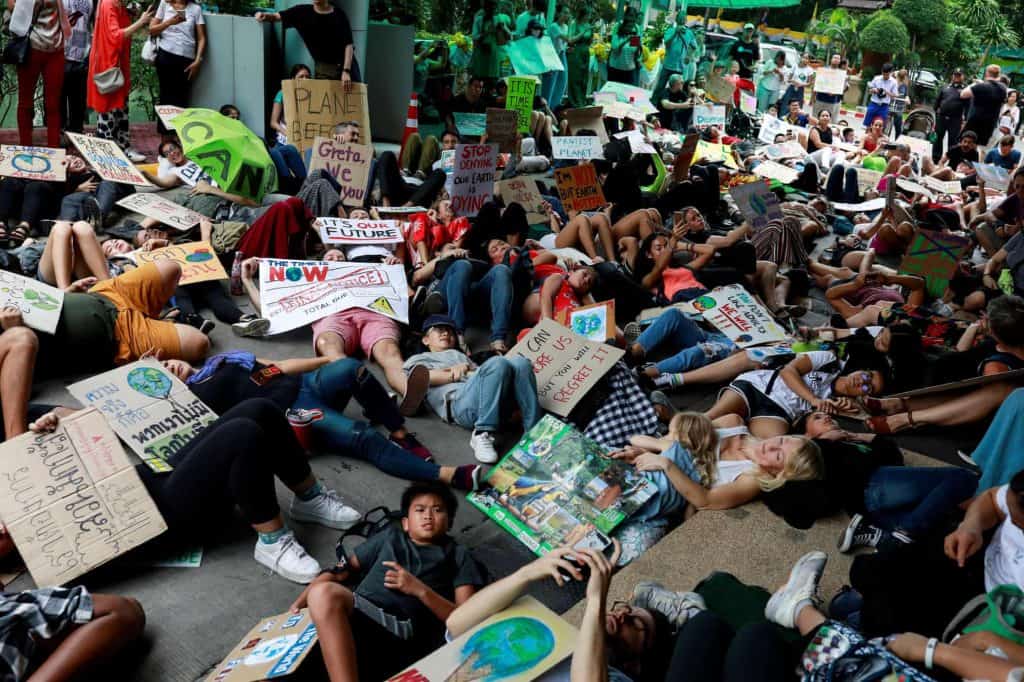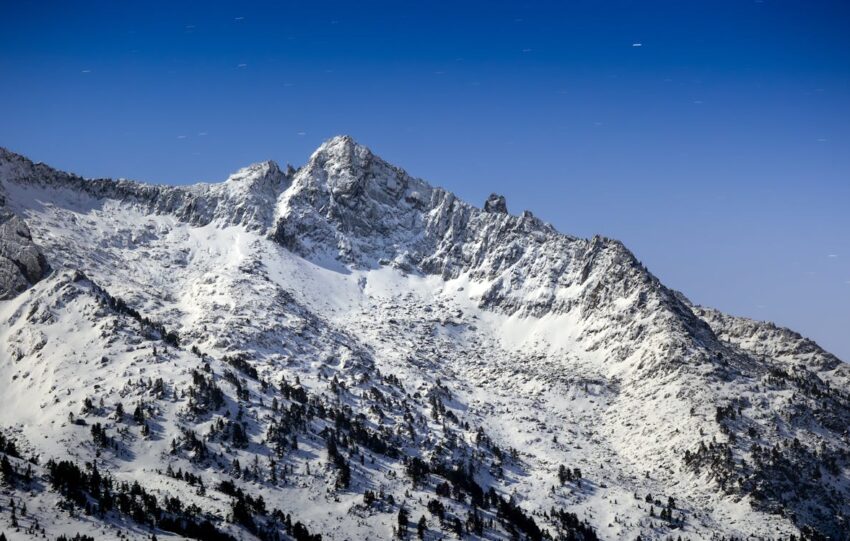In concert with the United Nations Climate Action Summit taking place in New York, Greta Thunberg called for students and climate crusaders to walk out of school and work last Friday, September 21st and stand in solidarity with her as she demands an end to the age of fossil fuels. This is how protests unfolded in Asia…
From major cities to relatively unknown islands, last week was punctuated with protests as nearly four million students and change-makers collectively called on policymakers to take overdue steps to fight climate change. Dance circles and handmade place cards were spotted amid the youth-led marches that unfolded in around 150 countries. The strike was part of the #FridaysForFuture movement led by activist Greta Thunberg in her plight to raise awareness surrounding climate change.
Climate change is expected to have a profound impact on Asia, with large parts of cities like Jakarta and Bangkok predicted to be underwater by 2050 (BBC). Super typhoons are ravaging the Philippines, and forest fires are inundating Indonesia. Yet the region still emits a staggering amount of CO2, with China ranked first and India and Japan third and fifth among the globe’s worst polluters (Global Carbon Project). But with a large part of the population living below the poverty line, climate change largely remains a middle-class concern and many countries in Asia can only rely on their governments for action. For that to happen, residents need to put pressure on ruling parties, and one way to do that is through protests.
While there might have been fewer protests and lesser numbers in Asia than in the rest of the world, efforts were certainly amplified since the last global strike in March. As the sun rose over the Pacific Ocean, low-lying communities in deluge-threatened islands were the first to see protests get underway. Students in Kiribati were seen rowing to shore before performing a traditional warrior dance while chanting “We are not sinking, we are fighting”. Children in the Solomon Islands rallied on the shoreline wearing traditional grass skirts and carrying wooden shields. This is what followed in the rest of Asia…
THAILAND

Amid sweltering heat in Thailand, more than 200 youths marched into the Environment Ministry in Bangkok before dropping to the ground and feigning death. “This is what will happen if we don’t stop climate change now,” said 21-year-old strike organiser Nanticha Ocharoenchai. 12-year-old Lilly Satidtanasarn, known as “Thailand’s Greta” for her campaign against plastic bags in malls, spoke to a cheering crowd and said: “We’re young, but we’re not dumb. We know it’s happening. We need change. We demand better.” Adisorn Noochdumrong, a senior official at the Ministry of Natural Resource and Environment, supported their cause. “This is how young people express their concerns, which we deem as a good sign and not at all a nuisance,” Noochdumrong said to Reuters. “We encourage it.”
SINGAPORE
Despite the city-state being engulfed in a haze drifting in from neighbouring Indonesia’s forest fires, around 1,700 Singaporeans rallied for climate change at Singapore’s first climate rally on Saturday, one day after the global strike. Participants, most of them youths, congregated at Hong Lim Park and came bearing posters with slogans like “Don’t burn my future” and “O-Levels are soon, so is this irreversible climate crisis”.
JAPAN

In Japan, where Friday For Future Tokyo co-founder Hiroto Inoue says that “Japan is lagging behind in that movement,” protestors in Tokyo scrambled through Shibuya Ward and ultimately brought traffic at its famous crosswalk to a halt. “Friends of the same generation, let alone adults, don’t understand what we’re trying to do,” Inoue said to the Japan Times. “We raise our voices but society won’t listen.” Protests mostly took place in metropolitan areas like Tokyo, Osaka, Kyoto, Nagoya and Fukuoka, with more than 5,000 people taking part nationwide.
CHINA
Although protests in China, the world’s biggest contributor to greenhouse gas emissions, were not authorized, Zheng Xiaowen of the China Youth Climate Action Network said that youths would still take action. “Chinese youth have their own methods,” she said to Al Jazeera. “We also pay attention to the climate and we are also thinking deeply, interacting, taking action, and so many people are very conscientious on this issue.”
INDIA

In one the world most polluted cities in the world, hundreds of students and environmental activists in New Delhi rallied outside of the Ministry of Housing and Urban Affairs chanting “we want climate action” and “I want to breathe clean”. Others carried banners with messages like “there is no Planet B.”
“I have come to this protest today because I live in the world’s most polluted city and our government is doing nothing to change that,” said Asheer Kandhari to Al Jazeera. “Not taking action, a government doesn’t realise that they are taking away our futures. It’s my future that is being affected by the government’s inaction regarding the climate change policy.”
Another estimated 1,000 people joined the protests Sambhaji park in Mumbai. Sahaja Sarve, a college student, said the biggest problem in India is a lack of awareness but that the strikes are a step in the right direction. “People don’t want to acknowledge the importance of climate change. If people see us protest, they look up what it was about. That’s a good sign,” she said to The Times of India.
PHILIPPINES

In a movement hugely propelled by the increasing number of super typhoons (a direct result of climate change) that are devastating the Philippines, ahead of the strikes, the Department of Education (DepEd) said that students from kindergarten to senior high school could be excused from classes to join the strike provided that they had written consent. “Moved by climate realities faced by the Philippines and inspired by global youth action, young Filipinos nationwide will take part in the Global Climate Strike, a movement of young people to call for governments and private sector in prioritizing climate justice,” read a memo by DepEd. In Manila, students and workers assembled at the University of Philippines’ campus as part of the global strike and Flipino indigenous youths were also seen in Quezon City.
HONG KONG

Life in Hong Kong has come to a grinding halt in recent months with mass pro-democracy demonstrations unfolding almost every other day, so students cancelled their participation in the global climate strike as a result. Climate activist groups still stage small protests on Friday where they held signs and chanted slogans.
INDONESIA

In Indonesia’s capital city Jakarta, more than 1,000 people from youth communities marched for more than 1.5 kilometres in solidarity with the global climate strikes. In the Indonesian region of Kalimantan, where forest fires have been plaguing the region and sending a suffocating haze felt as far as Singapore, Malaysia and Thailand, students there have had enough. BBC News Indonesia filmed students on Borneo island shouting “Kalimantan is on fire, Kalimantan is suffering” as they marched through the town of Palangkaraya.
SOUTH KOREA

Several South Koreans staged a silent protest in Seoul where about two dozen environmental activists put on a performance using LED lights where they flashed the Morse code symbol for SOS, calling for action to rescue the earth. Elsewhere in the capital, an estimated 3,000 people from environmental organizations, schools and religious groups protested on Saturday with some participating in a die-in where they laying on the ground signifying death. Others marched carrying a larger-than-life globe-shaped balloon.
BANGLADESH

Thousands of students and protesters from different schools, colleges, and universities thronged Manik Mia Avenue near Dhaka’s parliament, in support of the global climate strike. They chanted “we want climate justice” while forming a human chain in front of the National Press Club demanding climate justice. An art installation dubbed “Plastic Monster” that is made from plastic, metal and industrial waste and represents pollution around the world was also spotted. The exhibition, by Action Aid, is expected to roam different streets of the city to increase awareness among the dwellers.
TAIWAN
Heeding Greta’s cry, dozens of representatives from primary schools, high schools, and universities gathered in Taipei’s Ximending area, where a 250cm-high ice sculpture symbolic of melting polar ice caps was on display. They gathered to launch a petition that would press candidates in the upcoming presidential election to lay out concrete policies to mitigate climate change risks.
MYANMAR
On Sunday, September 22, two days after the global climate strikes, about 200 people took to the street in Yangon in Myanmar. They marched from Bogyoke Market to Sule Pagoda, and then gathered outside Maha Bandoola Park. Myanmar is prone to the consequences of climate change and natural disasters, feeling the extremes of flooding and drought which is oftentimes exacerbated by human activity. Strike for Climate Myanmar are urging relevant authorities to establish policies that will manage natural disasters that are worsened by the effects of climate change. They are further urging the government to halt big infrastructure projects, like the Myitsone Dam in Kachin State.
Leading image via Reuters


